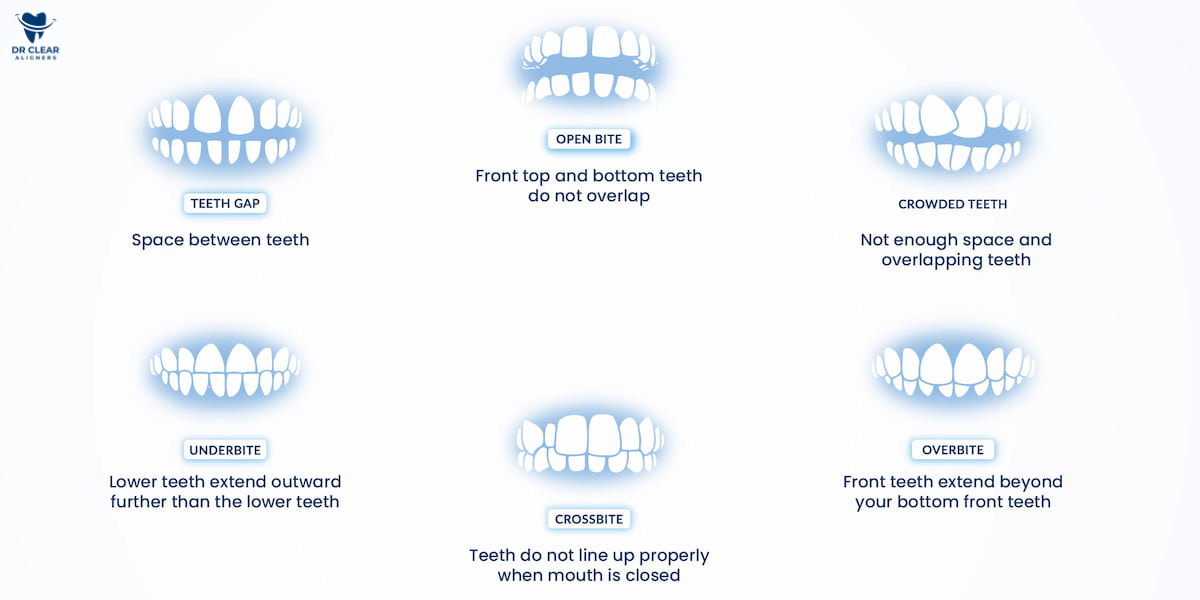There are 6 different types of malocclusions: 1. Overbite 2. Underbite 3. Open bite 4. Overcrowded 5. Crossbite 6. Gap Teeth
If you are unsure about which type of malocclusion you're facing, let us explain it to you. Knowing which misalignment problem you may have could assist your dentist choose the best course of action for you.
1. Overbite Teeth
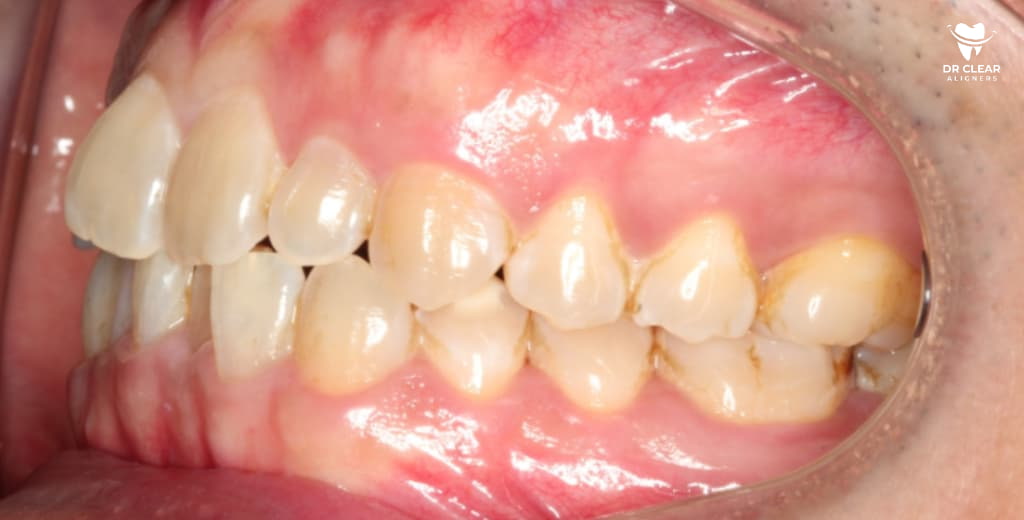
What Is Overbite?
An overbite is a misalignment in which the upper set of teeth jut out beyond the lower ones. If your teeth show a similar pattern to the visual above, it might be your dental scenario. Let’s look further into the causes of it so that you can understand this teeth bite problem better.Causes of Overbite Teeth
Genetics
Overbites may run in the family as a hereditary trait. Therefore, if your family has a history of it, there's a high chance that you'll exhibit the same dental condition.Teeth grinding
Bruxism, also referred to as teeth grinding, could be a factor for this problem. This habitual action can cause stress within your oral cavity and jaw, leading to an overbite.Prolonged childhood behaviours
Most children have engaged in pacifier or thumb sucking at some point. This is typical in children, but if they continue to sucking after their teeth begin to erupt, it could cause dental issues.2. Underbite Teeth
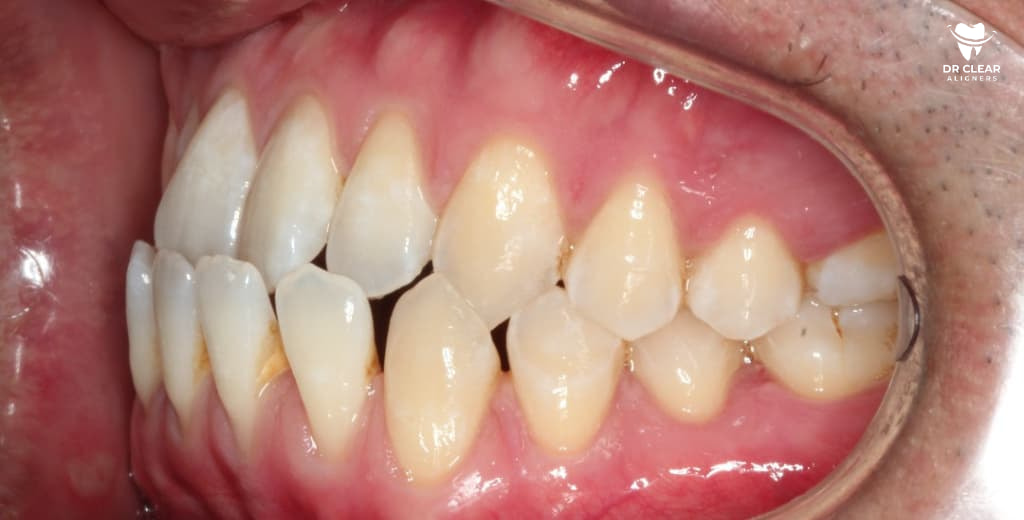
What Is An Underbite Teeth?
An underbite is a specific type of dental malocclusion where the lower teeth protrude than the upper teeth. This condition is often linked to various discomforts including, but not limited to, problems with chewing and the potential risk of sleep apnea.Causes of Underbite Teeth
Prolonged childhood habits
Similar to overbite, an underbite can be the result of extended childhood behaviours such as thumb-sucking, prolonged bottle feeding, or excessive use of pacifiers. These habits could put the jaw under excessive strain.Genetics
Underbite teeth can also be tied to your genetic history. If underbite is a common dental condition in your family, there's a likelihood that you may experience the same. Jaw alignment is often inherited and can influence your dental structure.Injuries
If you have ever had a serious injury to the jaw, facial injuries or traumas, it can cause displacement of the jaw leading to an underbite.3. Open Bite Teeth
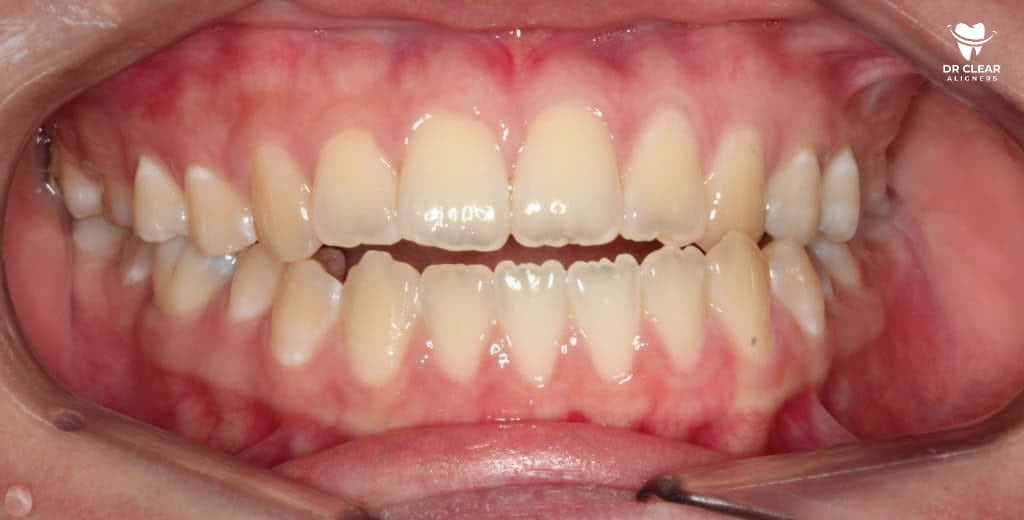
What Is An Open Bite Teeth?
An open bite refers to a form of teeth misalignment where the upper and lower teeth do not come into contact when the mouth is shut. In critical situations, it may require surgical intervention on the jaw.Causes of Open Bite
Prolonged childhood behaviours
If by the age of 6, children still have trouble weaning off thumb sucking, it can cause this dental problem. The habit can affect how the teeth develop.Poor tongue resting position
It can also be caused by a poor tongue resting position. A normal position of a tongue in rest should be behind the teeth. If the tongue touches the teeth, it will cause an open bite.Skeletal problems
An open bite could occur as a result of an overgrown upper jaw or an under-grown lower jaw.4. Crowded Teeth
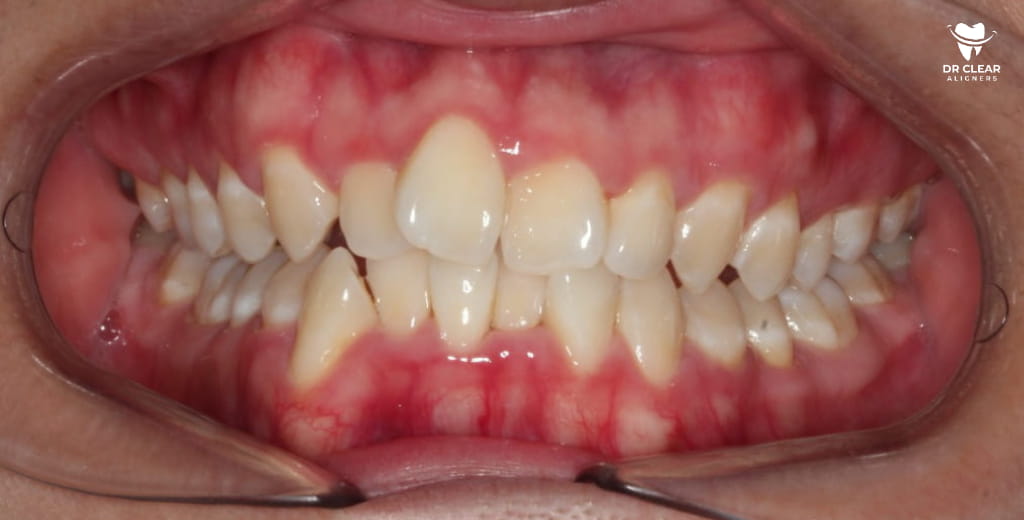
What is Crowded Teeth?
Crowded teeth, as the name implies, happen when your teeth crowd due to the lack of room in your mouth. Since the teeth cannot fit in properly, your teeth may shift and overlap as a result.Causes of Teeth Overcrowding
Jaw size
A small jaw can lead to crowded teeth as there isn't enough room to accommodate all of your teeth. This is often a trait that's inherited from your parents.Losing baby teeth too early
If you have lost your baby teeth too early, the empty space will be replaced by permanent teeth even though they are not ready to grow in. This will cause your teeth to overcrowd.Tooth size
If you have teeth that are larger than average, it can lead to crowding if your jaw isn't large enough to accommodate them.5. Crossbite Teeth
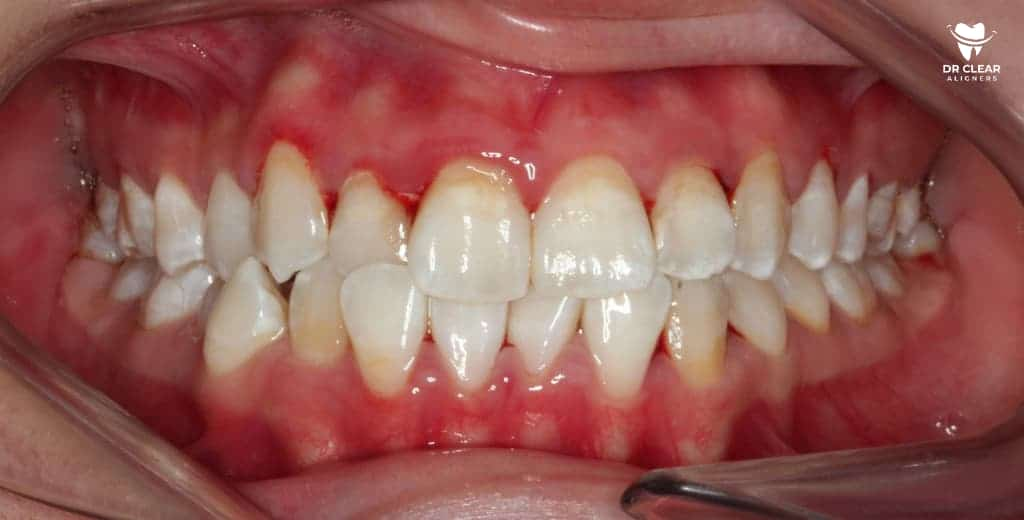
What is Crossbite Teeth?
Crossbite is a type of misaligned teeth where your upper teeth do not align correctly with your lower teeth when your mouth is closed. It happens when one or more bottom teeth protrude past the top teeth.Causes of Crossbite Teeth
Delayed Tooth Eruption
Delayed loss of baby teeth and growth of adult teeth can cause this misalignment. If a baby tooth stays in place while an adult tooth is emerging, the adult tooth might not have enough space, causing it to grow crooked or misplaced.Misaligned Jaw
If the upper and lower jaw don't align correctly, the teeth may not meet properly, causing a crossbite.Mouth Breathing
Habitual mouth breathing, often due to conditions such as allergies or enlarged tonsils, can influence the shape and development of the jaw, potentially leading to a crossbite.6. Gap Teeth
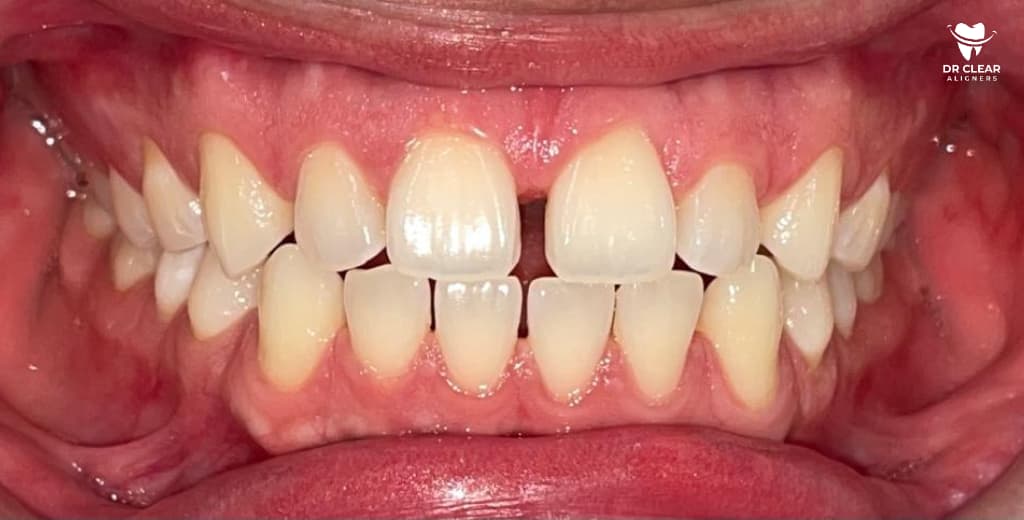
What is Gapped Teeth?
Gap teeth, also known as diastema, are characterised by a visible gap between two teeth. This can occur anywhere between your teeth, but it's most common between your two front teeth.Causes of Gap Teeth
Incorrect swallowing reflex
The tongue should normally be pressed on the roof of the mouth, however some people force the tongue against their front teeth, which over time may result in a gap.Undersized Teeth
One of the primary causes of diastema is a size mismatch between the teeth and the jaw. Small teeth for a large jaw can result in spaces between the teeth.Mouth Breathing
The skin that connects the inside of your top lip to the gum line above your front teeth is called the labial frenum. Sometimes it would grow in an irregular way and this can result in the formation of a space between the front teeth.Find out which teeth bite problems you may have by getting a free smile assesment.
5 Effective Treatments for Teeth Misalignment and Malocclusion
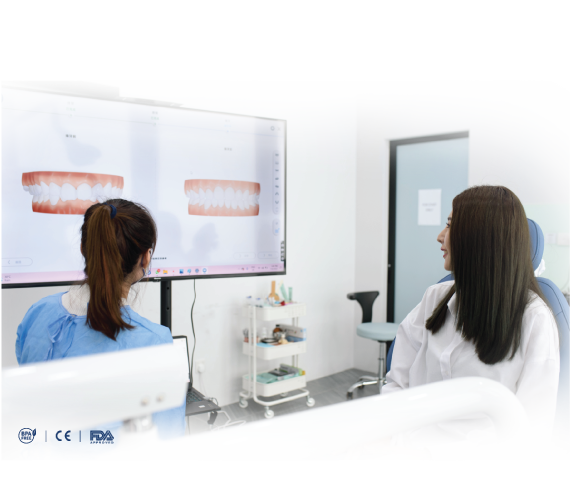
Now that you're more familiar with types of malocclusion, you might want to know about potential treatments for these bite problems. Misaligned teeth treatment varies depending on the type and severity of the condition.
1. Metal Braces
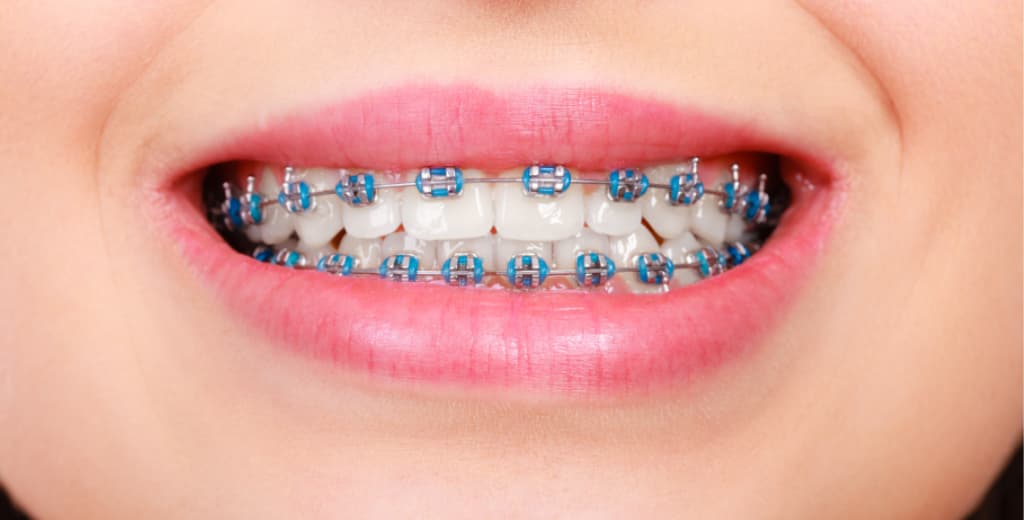
You have probably heard of metal braces before. It is an orthodontic device that will be able to help with aligning your teeth back into position. It works by attaching the metal brackets to the teeth and having the wire hold them together with coloured rubber bands. They are the most commonly used treatment for malocclusion problems.
2. Self ligating Braces
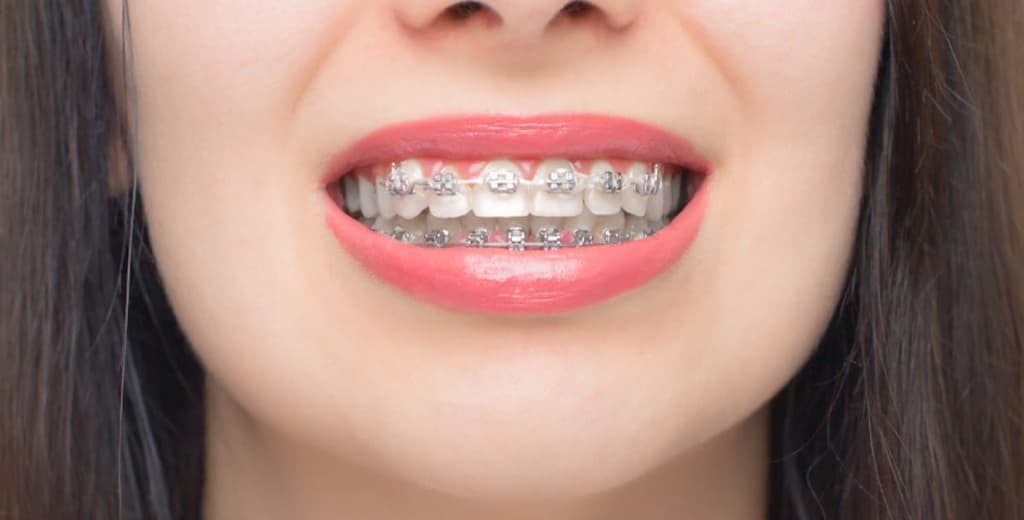
Self ligating braces work exactly like metal braces except that they do not use rubber bands. Metal braces require rubber bands to connect the metal brackets but self-ligating braces require clips to hold the wires to the bracket. Due to this, these braces won’t look as noticeable as compared to traditional braces.
3. Invisible Braces
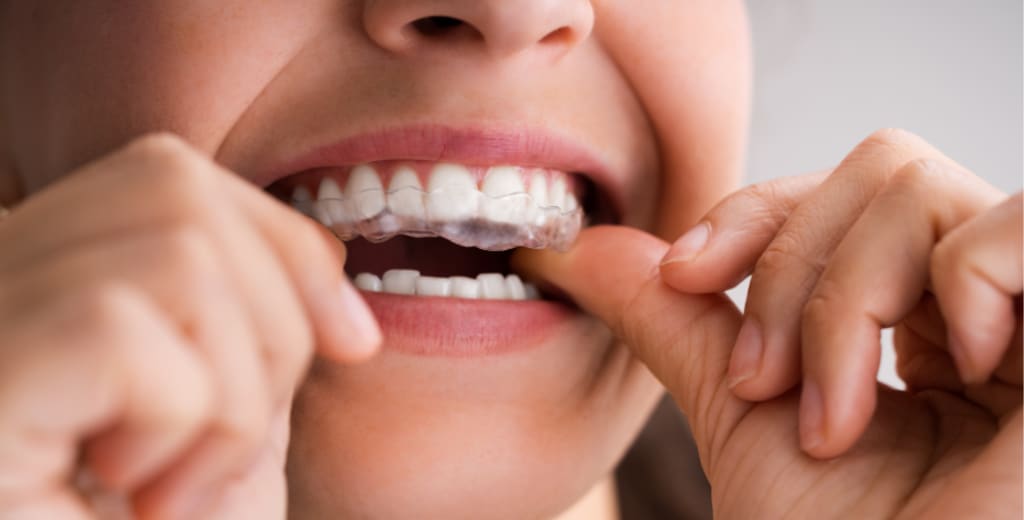
Then, there are invisible braces (also known as clear aligners). This dental appliance is a more recent development in orthodontics. They are a series of transparent, custom-made, removable braces that fit over your teeth. In comparison to conventional braces, it does not require wires and brackets which makes them less noticeable. Aligners are suitable for patients that have mild to moderate cases of malocclusion.
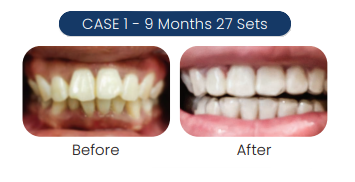
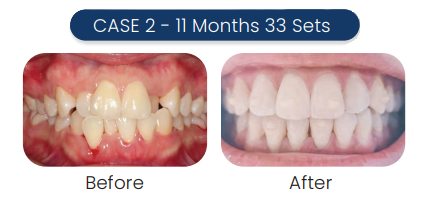
The images above depict real-life cases of overbite and crowded teeth patients who wore aligners for nine to eleven months. If traditional braces are not your thing, you might want to consider this as your option.
4. Lingual Braces
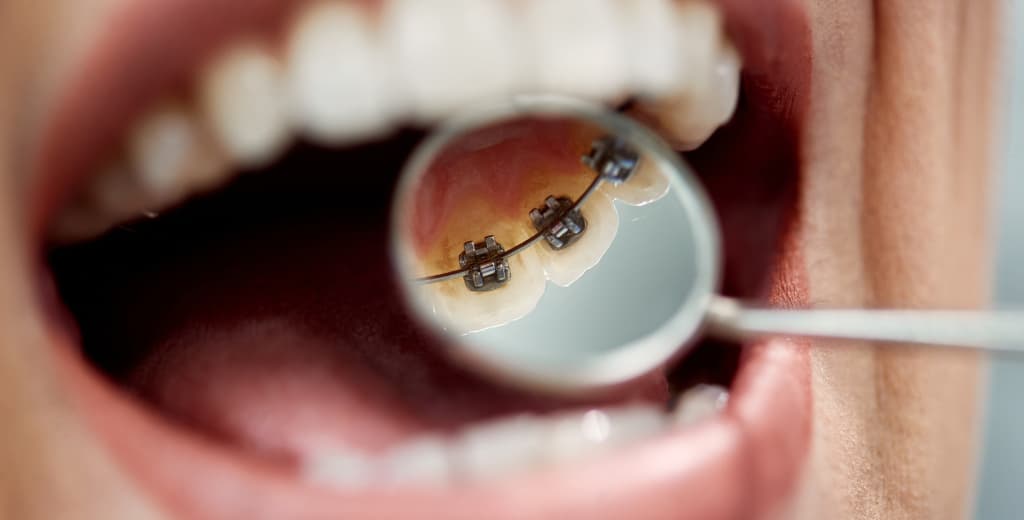
Lingual braces, like conventional braces, straighten your teeth by exerting pressure on them. However, they are attached to the back of the teeth rather than the front. With more discretion, they provide the same effectiveness as normal braces.
5. Orthognathic Surgery (Jaw Surgery)

In severe cases of malocclusion, or where non-surgical treatments have failed, surgery may be necessary. This is a major procedure, involving the realignment of the jaws to correct the malocclusion. This treatment is often followed by orthodontic treatment to fine-tune the position of the teeth.
Before deciding on a treatment, it is always better to consult with your dentist. They will be able to advise you on which treatment is the best for your current teeth worries. This is because teeth misalignment treatment can vary depending on the severity of your teeth conditions.
If you've been meaning to get your teeth aligned but have been putting it off, feel free to take our Free Smile Assessment to see if you’re suitable for our clear aligners or you can read more about them.
